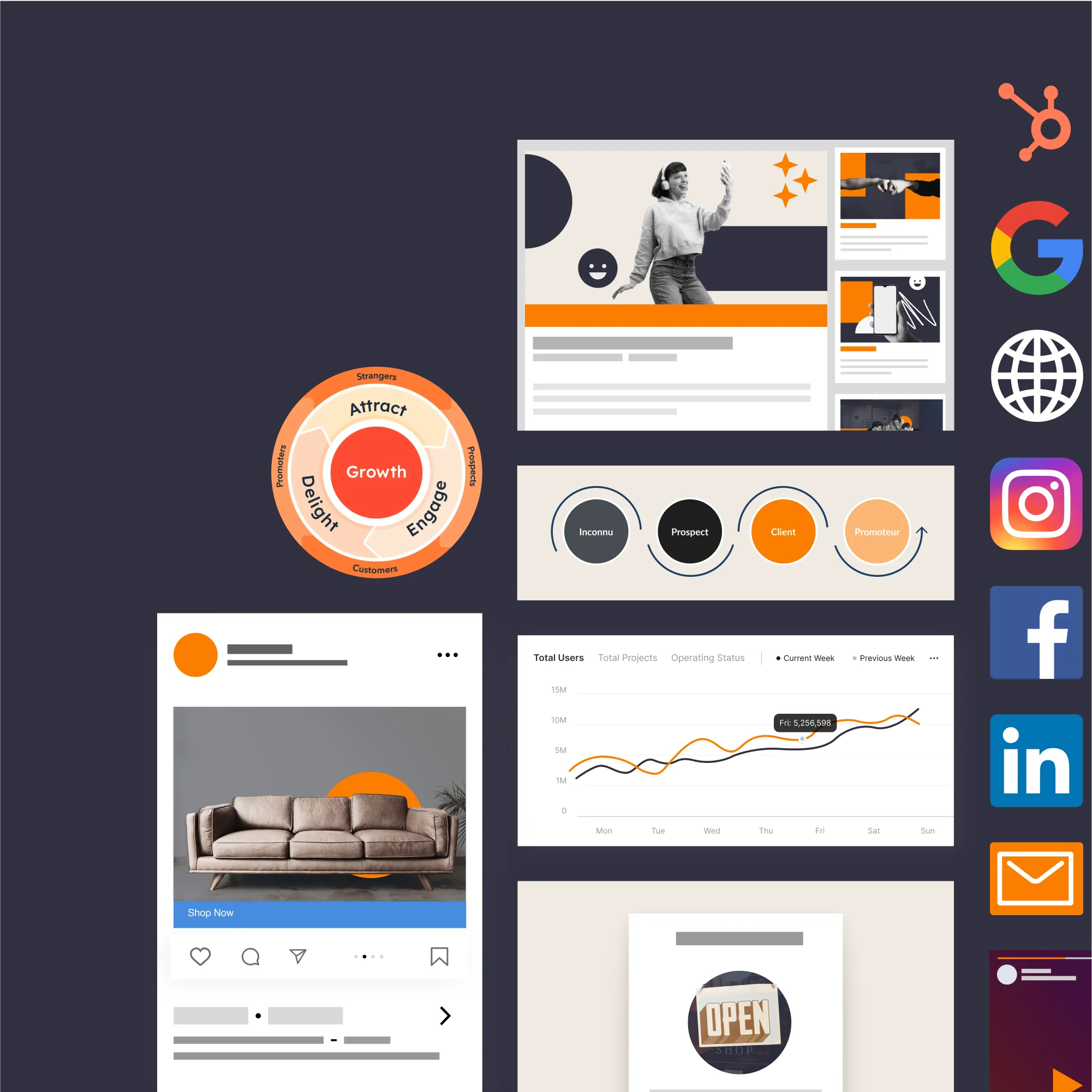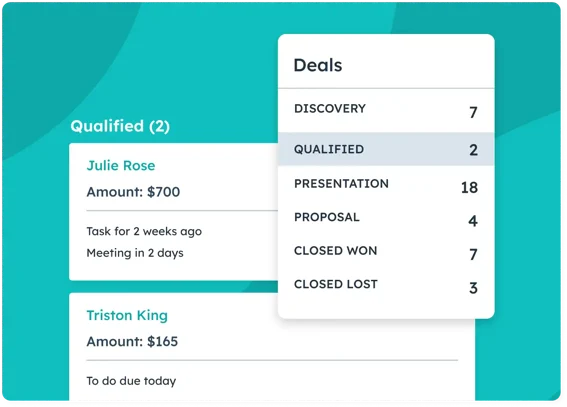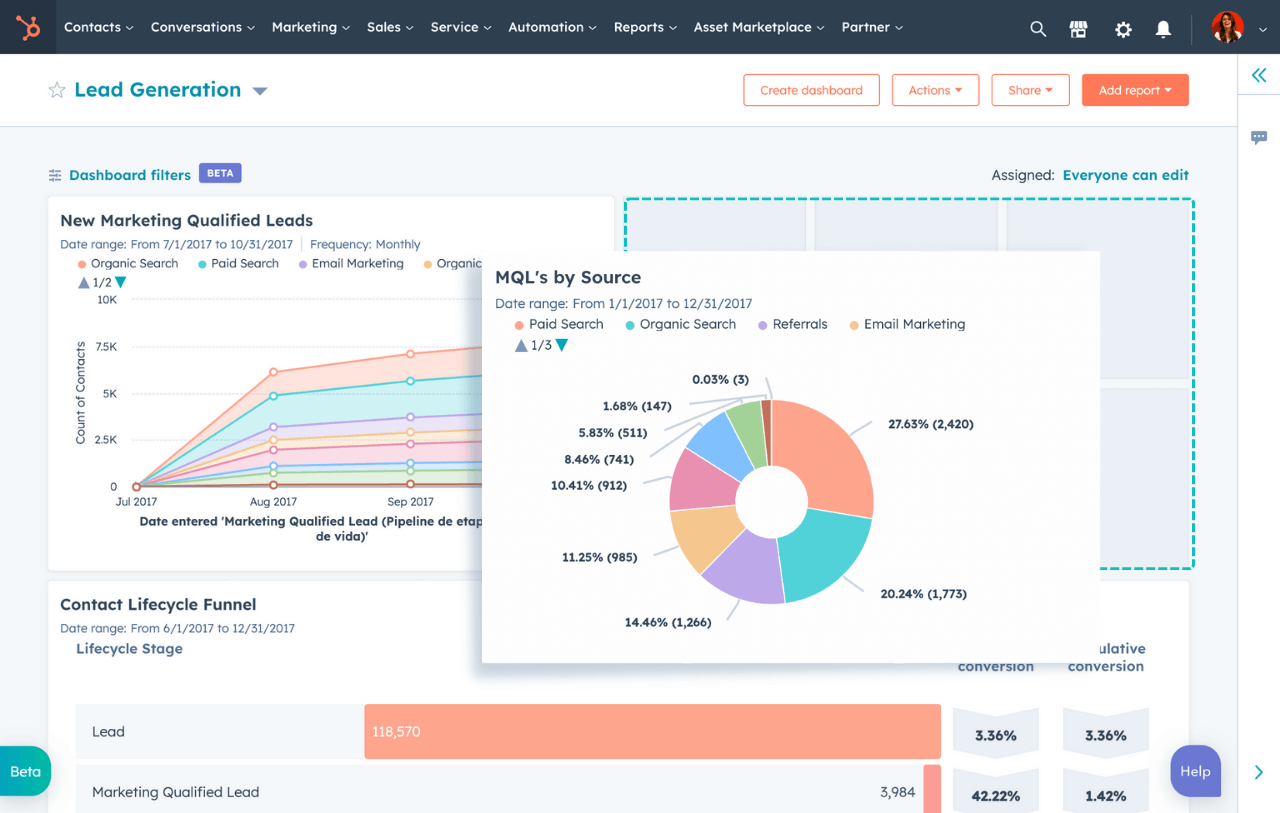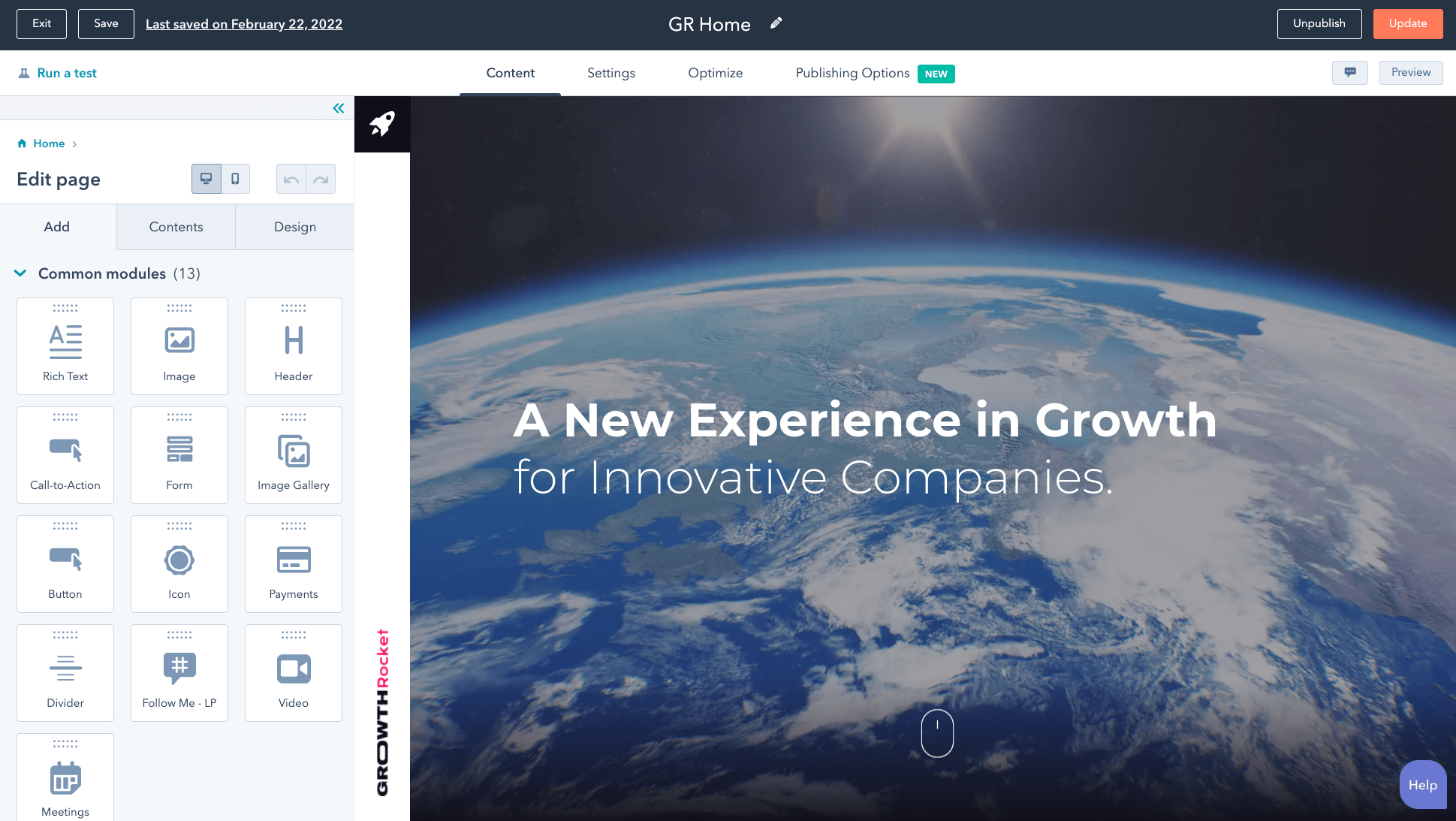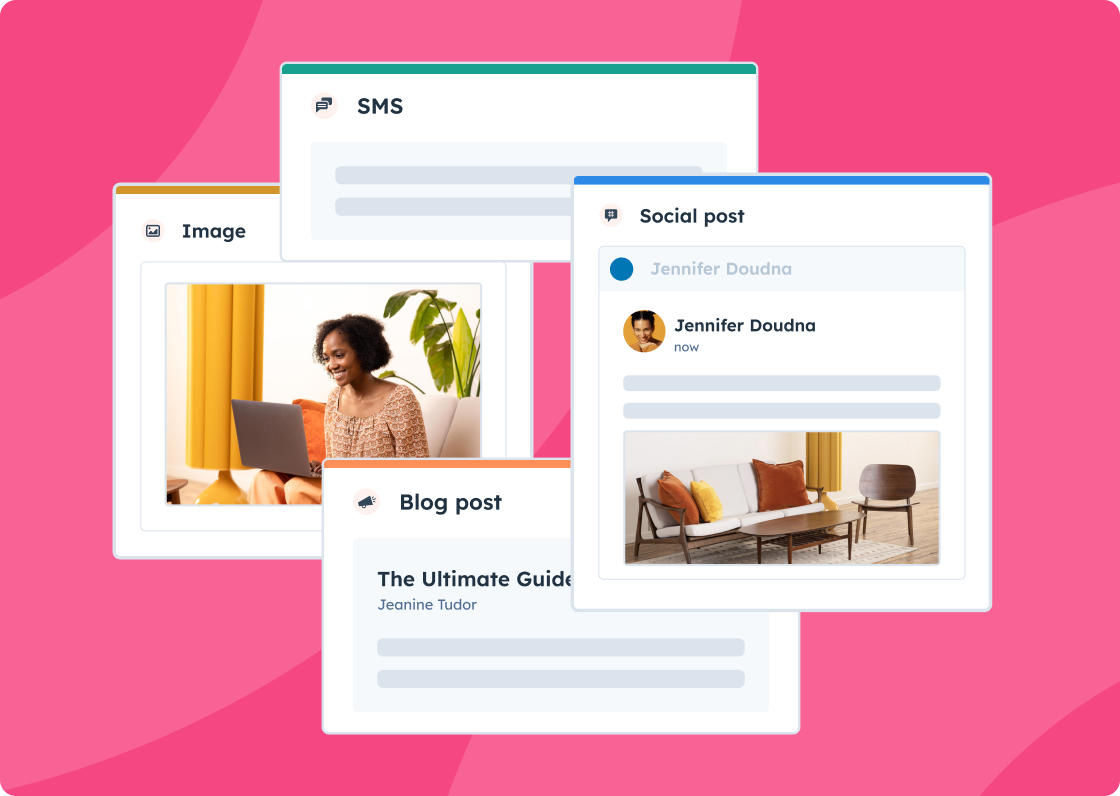HubSpot Marketing Hub is a complete digital ...
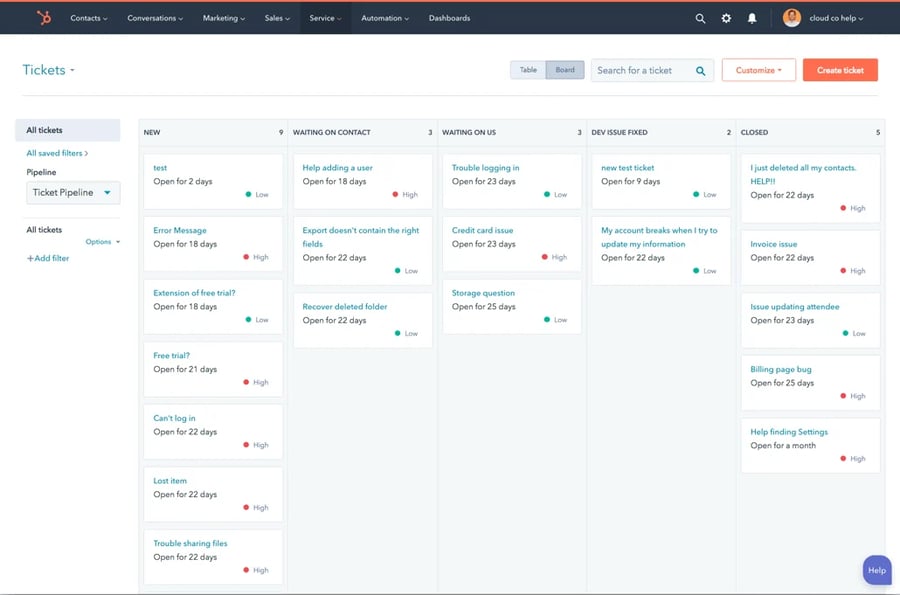
Optimizing customer experience with HubSpot Service Hub
12 Mar 2024
Table of contents
HubSpot Service Hub is designed to simplify customer relationship management. With its diversified features, this tool simplifies interactions between companies and customers. Its integration with other HubSpot tools forms a complete customer service system.
This article aims to highlight the main capabilities of HubSpot Service Hub.
We will also explore how this hub contributes to smooth communication while improving overall customer relationship management.
Key features of HubSpot Service Hub
Centralized ticket management
HubSpot Service Hub is a powerful customer relationship management tool that simplifies interactions between companies and customers. Its diverse features make it easier for businesses to manage customer service, from tracking customer interactions to automating tasks and providing assistance with the help desk.
The tool integrates seamlessly with other HubSpot tools to create a complete customer service system, providing companies with a holistic view of their customers and enabling them to deliver personalized experiences. With HubSpot Service Hub, businesses can optimize their customer experience and build lasting relationships with their customers.
Knowledge base
HubSpot Service Hub's knowledge base tool enriches the customer experience. Like HubSpot's help center, your company can build its own knowledge base.
This tool is ideal for sharing various content, including informative articles and explanatory videos related to your products or services.
So, by using this tool, you offer your customers the opportunity to inform themselves autonomously. This autonomy is beneficial on several levels.
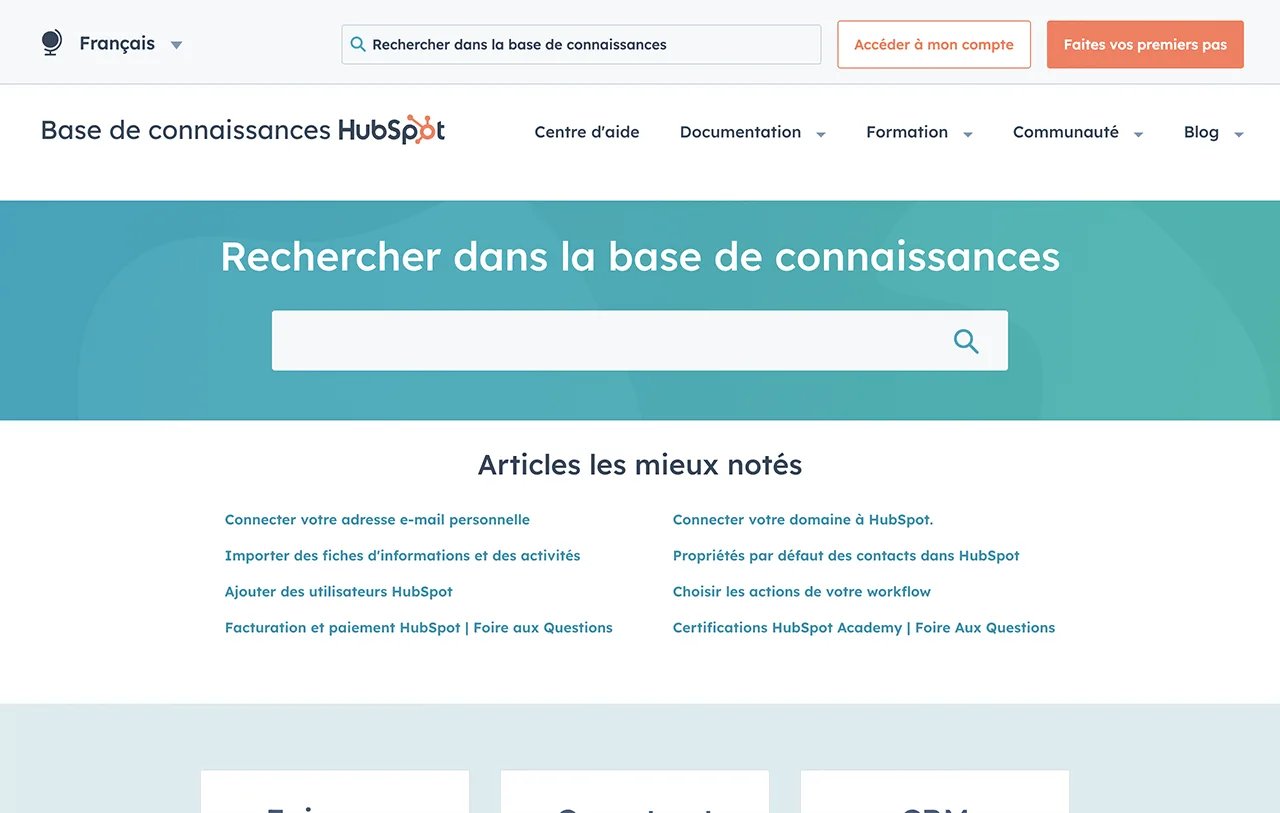
Reduced repetitive queries
Customers can access answers to common questions without contacting your customer service department.
For example, a user can consult a dedicated article if he wants to understand how to reset his password. And they don't have to send an email or make a call.
Improved customer experience
Customers appreciate solving their problems quickly, without waiting for assistance. A well-written article on configuring a specific feature of your product directly improves their user experience.
Support 24/7
Unlike traditional customer service, the knowledge base can be accessed anytime. This is particularly useful for customers in different time zones or those who prefer self-help outside working hours.
Scalable, customized content
The knowledge base is not static. Indeed, if a specific problem or recurring question comes up frequently, a new article can be created to answer it.
As a result, the knowledge base evolves in parallel with the product and user feedback. Adopting this approach demonstrates that your company is attentive and responsive to your customers' needs.
Support for new users
For new customers, the knowledge base becomes a support resource.
A series of specific articles can help them familiarize themselves with your service. In this way, you build confidence and satisfaction right from the start.
Automating and improving customer service
Automating recurring tasks in HubSpot Service Hub is a strategic lever for companies.
It saves time and effort for customer service teams and increases their productivity and the quality of the service they provide. Here's how.
Automated handling of routine queries
Automation in HubSpot Service Hub simplifies handling frequently asked questions or standard requests.
To achieve this, HubSpot offers a chatbot system. By customizing them, you'll be able to answer questions that your customers frequently ask.
In other words, if many customers ask questions about how to reset their password, the system can automatically send a detailed guide in response to this specific request.
Customized workflows
Customizable workflows enable processes to be structured according to specific business needs.
To give a precise example, this includes the automatic routing of tickets to the right teams.
Thanks to this feature, you can ensure faster and more accurate follow-up of requests.
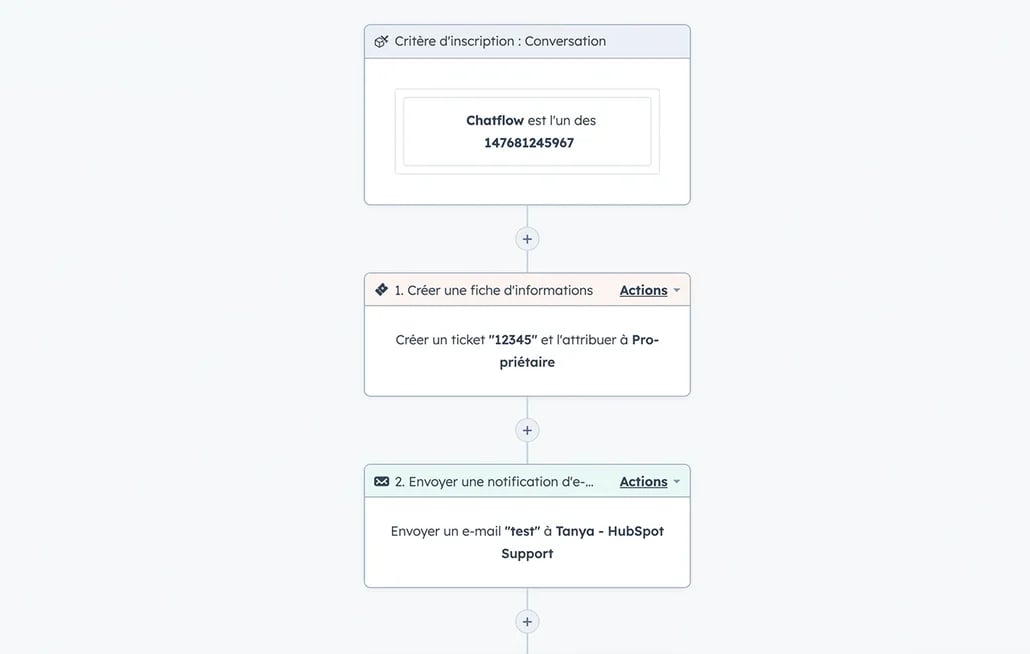
Automated notifications and reminders
Automatic notifications and reminders help keep track of tasks and deadlines. This reduces the risk of forgetting or delaying customer requests.
Data analysis and reporting
Data analysis and reporting in HubSpot Service Hub uses automation to process information gathered during customer interactions.
This process helps identify trends, such as friction points or recurring topics in support tickets and tracks compliance with Service Level Agreements (SLAs). The system guarantees priority management of requests by defining precise deadlines for response and closure times. This directly improves the quality of customer service.
Afterwards, it generates detailed reports, giving a clear view of customer service performance and areas for improvement.
Ultimately, these reports help make decisions to optimize customer service and increase overall user satisfaction.
Multi-channel communication tools
HubSpot Service Hub supports a variety of communication channels, making customer interactions more accessible and flexible.
Emails
You can manage email communications. Specifically, when a customer sends an email query, the system automatically routes it to the appropriate agent, ensuring a rapid, organized response.
Live chat
Live chat options enable instant interaction. This option is particularly useful for simple or urgent questions.
Phone calls
The system has call center functionality that allows customer calls to be recorded and allocated to the appropriate agents.
Social Media
Communication on social networks is also integrated. You can then answer questions and interact with your customers directly through social networks like Messenger and WhatsApp.
Feedback surveys in HubSpot Service Hub
HubSpot Service Hub integrates feedback surveys as a feature for gathering information on customer satisfaction. This option enables companies to ask questions tailored to their needs. They can choose between standardized questions or develop their own specific queries.
Regarding personalizing surveys, HubSpot Service Hub provides the flexibility to adjust content using tokens. These personalization tokens are dynamic elements that automatically replace certain information with customer-specific details, such as the customer's name or company name.
This makes each survey unique and relevant to each recipient. Moreover, the variety of distribution channels, such as email and chat, means that customers can be reached in various ways.
Last but not least, integrated dashboards are a practical feature of these surveys. They provide detailed tracking of each survey's performance and present data on customer satisfaction.
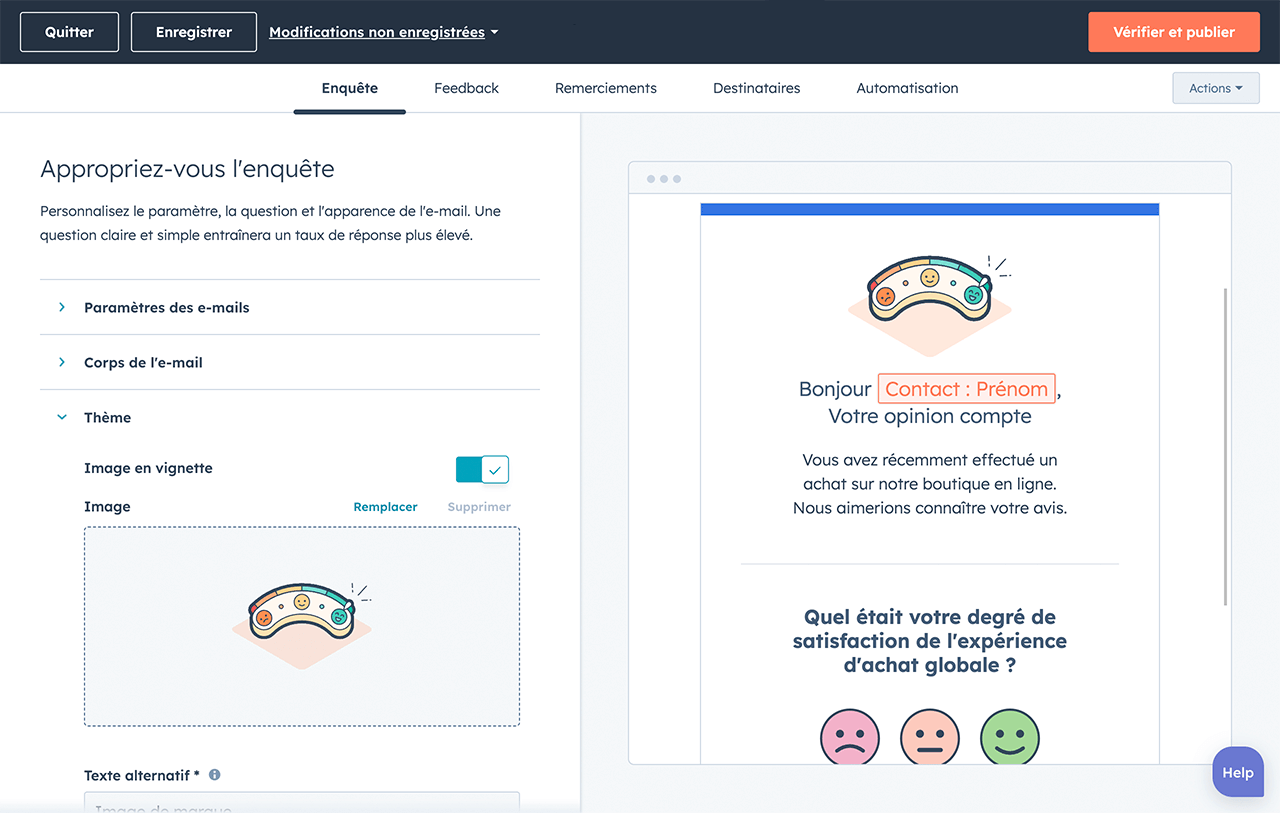
Integration with other HubSpot tools
HubSpot Service Hub's integration with other HubSpot modules (CMS Hub, Marketing Hub, Sales Hub, Operations Hub) consolidates customer management across the entire system. This direct connection to HubSpot's CRM enables teams to access unified customer information, regardless of the Hub used.
Centralized access to customer data: By connecting the Service Hub to the CRM, all customer information is centralized in one place. So when customer service agents consult a file, they see a complete history of interactions, transactions, preferences and feedback. This centralization facilitates a comprehensive understanding of the customer's needs and history.
Real-time updates: Any interaction on the Service Hub is instantly reflected in the CRM. For example, if a problem is resolved via the Service Hub, this information is updated in the customer's CRM profile. This ensures that sales, marketing and customer service teams always have an up-to-date and consistent view of each customer.
Personalized customer service: Complete, up-to-date customer data enables service agents to offer personalized service. For example, if a customer has recently made a purchase, the agent can provide personalized assistance and recommendations based on this purchase.
Why choose Momentumm?
Discover the power of our Service Hub onboarding solutions, designed to improve your business through technical implementation guidance, strategic consultation and seamless integration of HubSpot into your existing ecosystem. Benefit from personalized support designed to enhance the customer experience and align you with your unique objectives - your success is our mission.
- Inbound channels. Discover the art of seamless communication by harnessing the power of our unified inbox! Effortlessly merge different channels to orchestrate, monitor and control every interaction in a centralized hub - redefine how you connect with your contacts.
- Ticket automation. Discover the power of ticket pipelines and personalized statuses to streamline and automate your customer service and ensure fast, efficient responses to every customer interaction.
- Analysis reports. Monitor your team's performance and customer interactions to spot challenges and uncover emerging trends proactively. Deliver exceptional service experiences to your customers to stay one step ahead.
HubSpot Service Hub vs. Zendesk
|
Criteria |
HubSpot Service Hub |
Zendesk |
|
A CRM platform and an all-in-one solution |
Provides a complete range of software for various business functions, making it easy to use and giving a global view of the customer journey. |
It includes Zendesk Sell and Zendesk Suite, which require integration for other business functions. |
|
Tools for customer service efficiency |
It includes automation features, master contract management, omnichannel communications, and a mobile inbox, which work in synergy with marketing and sales activities. |
Focuses on technical assistance with advanced support functionalities but lacks the tools to align all customer teams on a common interface. |
|
Customer self-service help |
Pro and Enterprise versions offer customer portal and knowledge base tools with multilingual support, SEO optimization, and reporting dashboards. |
All versions enable the creation of knowledge bases, and higher versions offer customer portals. |
|
Customization |
In advanced versions, it allows customization of objects, information sheets, surveys, and dashboards without complicating the user experience. |
It offers extensive customization in high-end versions and is ideal for large customer service organizations but can complicate system management. |
|
Integration and scalability |
There are more than 1,000 applications in its marketplace, including over 100 dedicated to customer service. It also has an extensive partner network for complex organizations. |
More than 1,200 integrations, mainly focused on support, with a smaller partner network. |
|
The overall cost of use |
The pro version is $667/month for 5 users ($130/user/month) and unlimited free users. |
Zendesk Suite Growth at $114/user/month, with additional costs for integrating other sales tools. |
|
|

